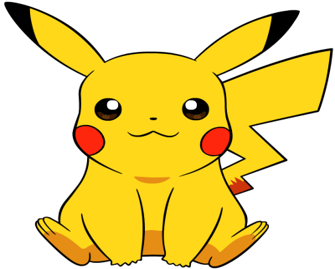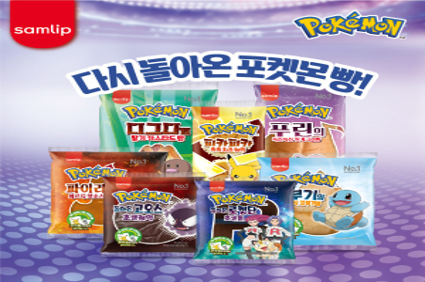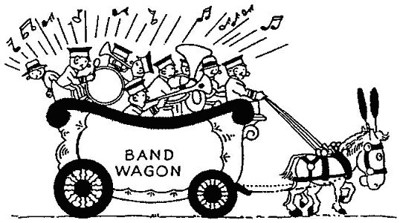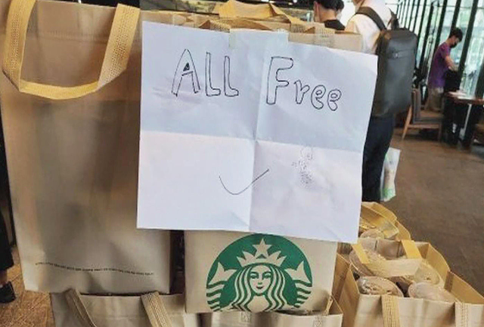
Pokémon bread is causing a hysteria beyond the sold-out chaos. Pokémon bread was released in 1998 and discontinued in 2006. However, as consumers continued to ask for a re-release, SPC Samlip released the "Return Pokémon Bread" series in February, which quickly became an explosive hit with the public. To get Pokémon bread, there are several people who are willing to ask acquaintances working at convenience stores and run to the store as soon as it opens. According to SPC Samlip, about 19 million Pokémon bread were sold as of May 2nd. Due to the rapid increase in demand from the public, SPC suffered a shortage of supplies, and the number of bread available at some convenience stores was limited to one per person. The reason why Pokémon bread is attracting so much attention is because of a sticker called "Ttibuttibu-seal(띠부띠부씰)" in the bread. Ttibutibu-seal was named after the first syllables of "remove" and "paste" in Korean. There are 159 Ttibuttibu-seals, one for each of the original Pokémon characters, and each bread has a random sticker. The original price of this bread is 1,500 won, but since so many people want to get the stickers in the wrapper with the bread, they are being resold from 5,000 to 50,000 won. Then, let's take a closer look at why Pokémon bread became popular and concerns about its popularity with CAH.
Why Pokémon Bread Became Popular
Retro Effect

The biggest popular factor of Pokémon bread is the retro craze among consumers in their 20s and 30s. Pokémon are part of the memories that people in their 20s and 30s have from their past. Many people in their 20s and 30s spent their childhood watching the Pokémon animation. In the early 2000s, Pokémon bread containing Ttibuttibu-seal was popular at that time, so people in their 20s and 30s used to buy the bread and collect the stickers. The Pokémon bread, which is fueling today’s craze, greatly stimulated the nostalgia of the 2030 generation by reproducing the name and taste of the past. People can bring back memories of their past by buying the bread and collecting the stickers. That's why I became so enthusiastic about this Pokémon bread.
Bandwagon Effect

Teenagers' interest in Pokémon bread is also exploding. "Pokemon Bread" and "Ttibuttibu- seal" hashtags on TikTok, whose main users are teenagers, reached 119 million and 51 million, respectively, as of April 13th, only about a month after the bread’s release. It is an interesting phenomenon where teenagers show great interest in Pokémon bread, even though they are not the generation who experienced Pokémon bread in their childhood. This can be explained by the “bandwagon effect”, which refers to the phenomenon following popular trends. By following the trend, the psychology of not falling behind others plays a big role. The bandwagon effect on Pokémon bread appears throughout the generation who purchase Pokémon bread, but it is especially noticeable among teenagers. Lee Eun-hee, the College of Consumer Science at Inha University, said, "The craze for Pokémon bread among teenagers stems from the psychology of not falling behind their peers. Pokémon bread is relatively inexpensive and accessible, so the current Pokémon bread craze has become a peer culture among high school students."
Funsumer

"Funsumer" is a combination of the word “fun” and “consumer.” This refers to consumers who pursue fun beyond simple product purchases or accept consumption as a play. They share their consumption experiences on social media to lead the trend. The distribution industry is also actively marketing funsumer products in line with this consumption trend. Pokémon bread's Ttibuttibu-seal also contains elements of gamification. Since each bread contains one sticker randomly, buyers will purchase several pieces of bread to collect more diverse stickers. This process of people trying to collect all the stickers has become a kind of game, beyond just collections. As such, Pokémon bread is gaining increasing popularity due to its successful funsumer marketing.
Concerns About Pokémon Bread Syndrome
Consumption That Has Lost Its Essence

Pokémon bread is a typical “Wag the Dog” marketing case, which is feared to lose its essence. Wag the Dog is marketing that induces consumers to purchase products by valuing the freebies (tail) higher than the main product (body), meaning that the tail shakes the dog's body, not the dog wagging its own tail. From a company's point of view, if Wag the Dog marketing succeeds, they will earn a lot of profit. However, from a consumer's point of view, there is a risk that the owner will have overturned consumption. In fact, Wag the Dog marketing has also been controversial at Starbucks Korea. Starbucks offers goods according to the mileage of purchases every summer and year-end. In the summer of 2020 in Korea, one consumer ordered as many as 374 cups to receive a summer vacation bag that is given for every 17 cups, and he threw away all the leftover drinks in the store after drinking just one cup, which became a hot topic. In January, KFC held an event in China to give a limited-edition doll when consumers buy a set menu to commemorate their 35th anniversary. The event received explosive popularity with consumers aimed at getting dolls. As a result, many people just threw away the food after ordering it, causing great controversy over food waste and environmental pollution. It is wrong to throw away the main product just to get a free gift. The same goes for Pokémon bread. Throwing away bread, which is relatively inexpensive, is also common among consumers who only want to get the ‘free’ stickers. Also, Pokémon bread is popular as an added value rather than the intrinsic value of the product, so it is not free from the risk of losing its essence.
Illegal Second-Hand Transactions

The Ttibuttibu-seal in the product is being regularly traded online dozens of times more expensive than the price of bread, and the "completed collection," which includes all 159 stickers, is listed at 800,000 won on Carrot Market, which is a secondhand transaction platform in Korea. Since the price of bread is only 1,500 won, if people collect all 159 types, it would only be about 240,000 won. However, the “completed work” is sold at more than three times the price. It is also a problem that secondhand transactions are made at excessive prices, but it is a bigger problem for people who sell only the bread without stickers. It violates the Food Sanitation Act for a person who is not registered as a food handler to trade food that has already been unpacked. They can be sentenced to up to three years in prison or fined up to 30 million won. Due to the popularity of Pokémon bread, secondhand transactions that violate the law are frequently occurring. It is likely to lead to a social problem.
Coming back in 16 years, Pokémon bread is gaining more popularity than expected. People in their 20s and 30s who spent their childhood with Pokémon, teenagers who want to keep up with the trend, and funsumers who enjoy consumption as a form of play are also keen to purchase Pokémon bread. However, there are also concerns about the excessive popularity of Pokémon bread. Accordingly, it is necessary to raise individual consumers' awareness of unethical consumption and strengthen punishment for those who violate the Food Sanitation Act. The Pokémon bread trend is expected to continue to be loved by consumers until another new trend arrives. How long do you think the Pokémon bread trend will last? Let's watch the future direction of the Pokémon Bread syndrome with CAH.

